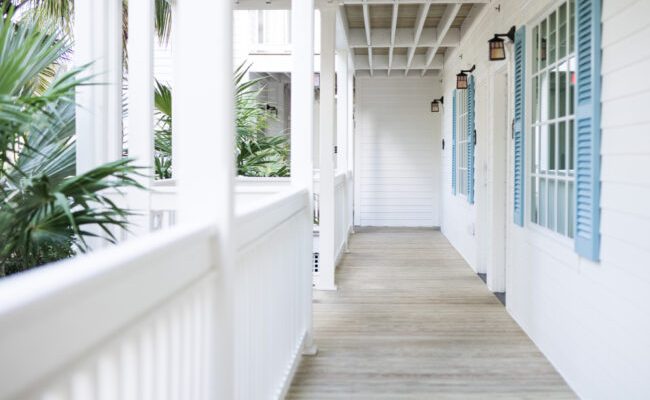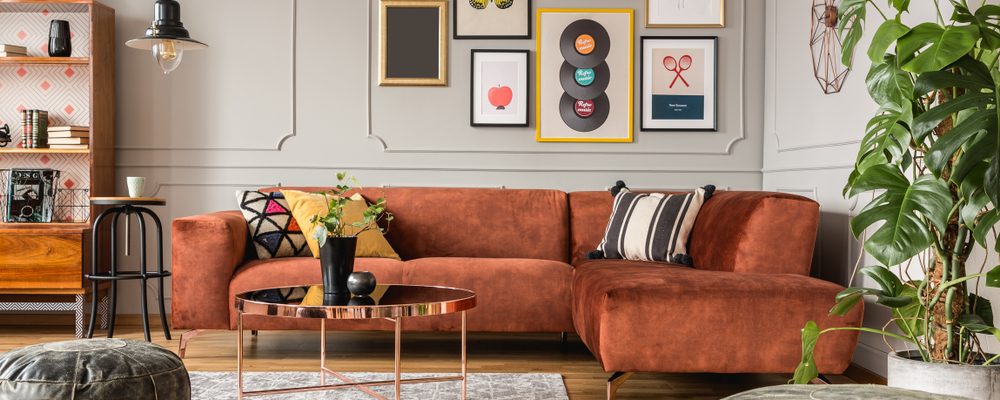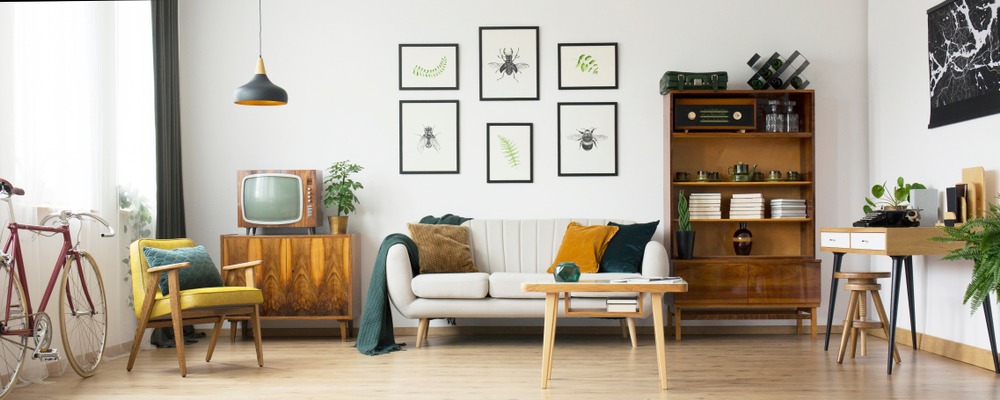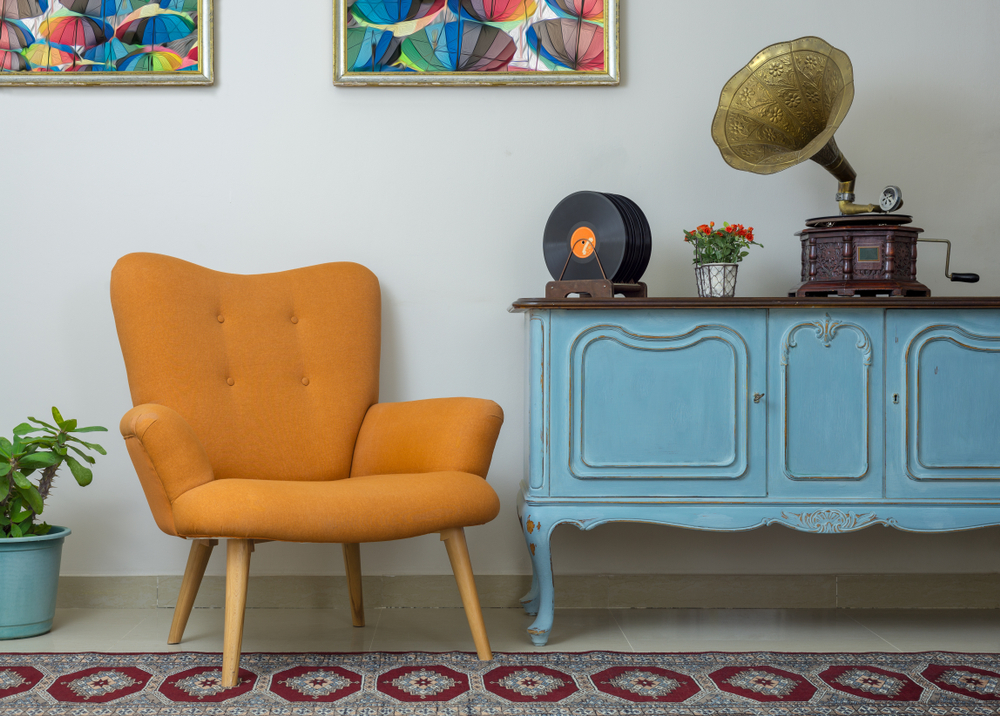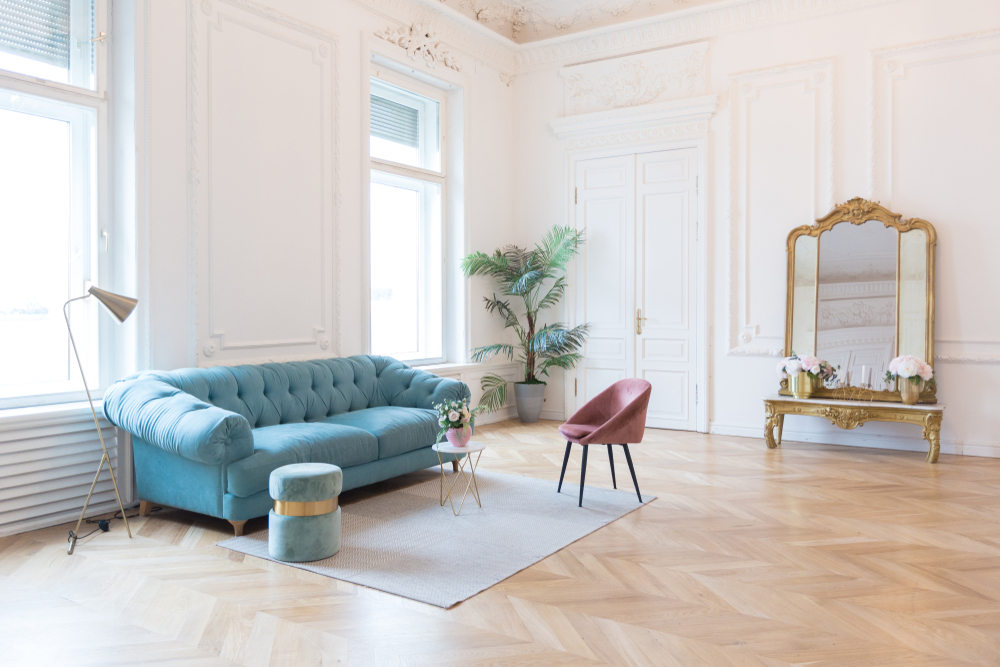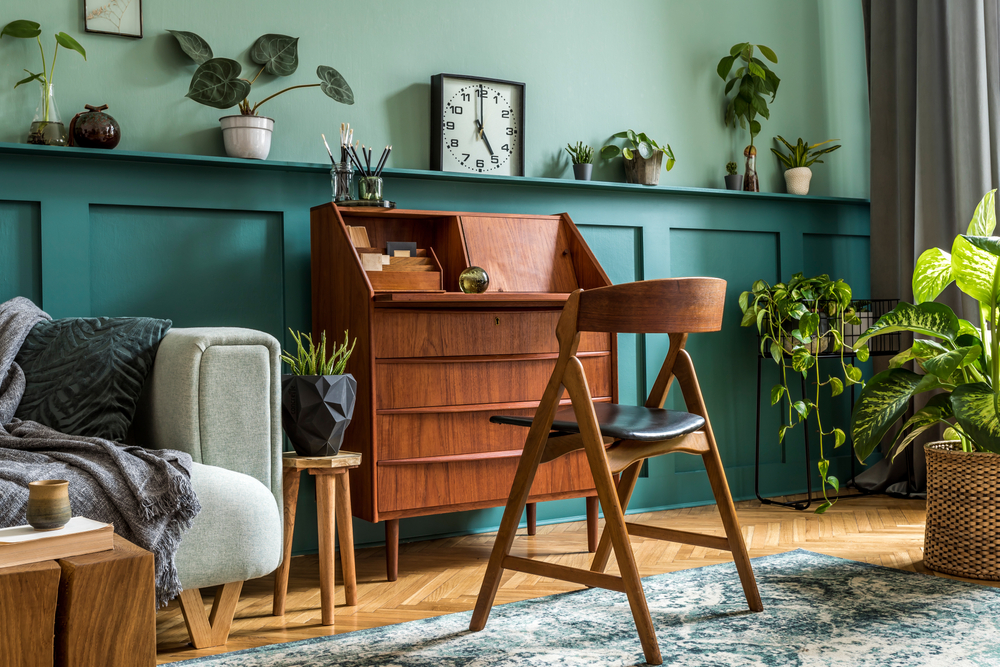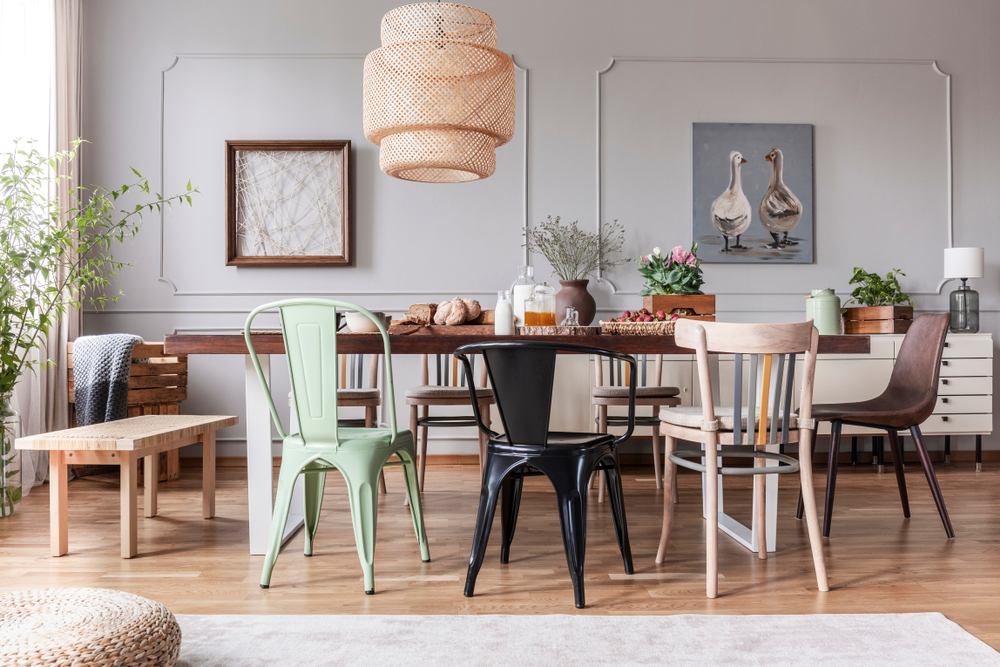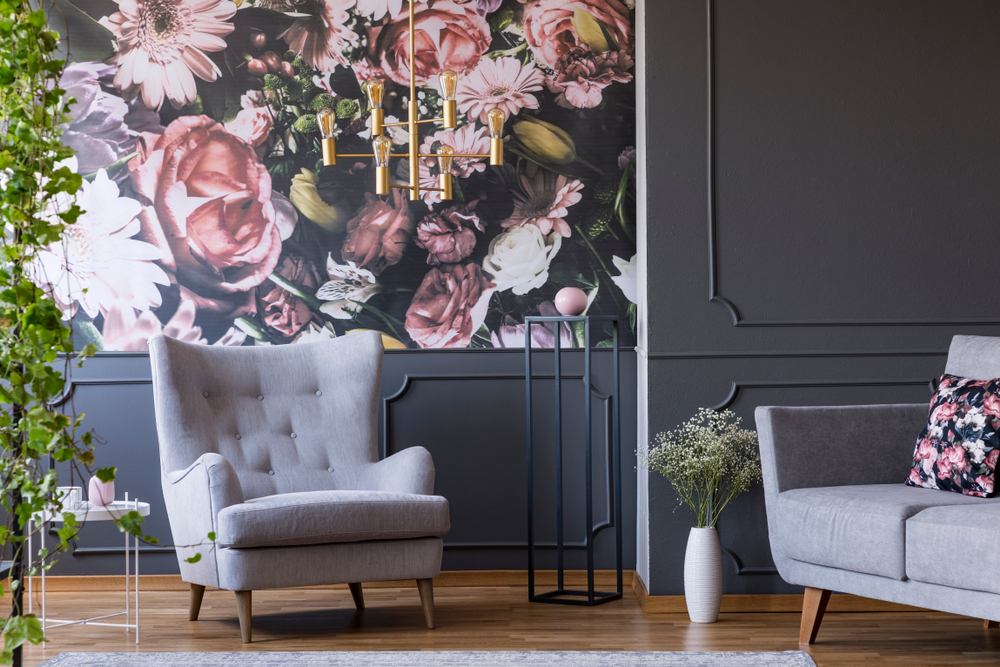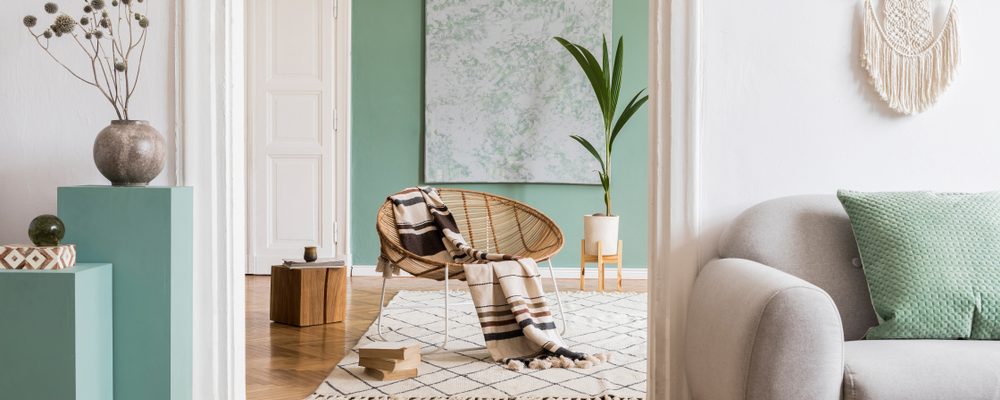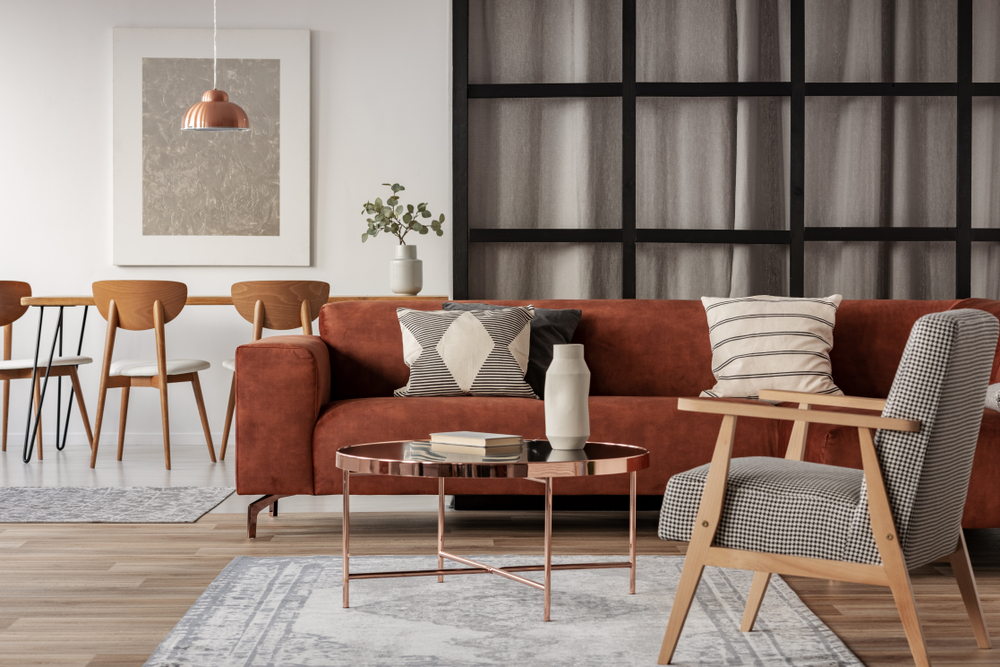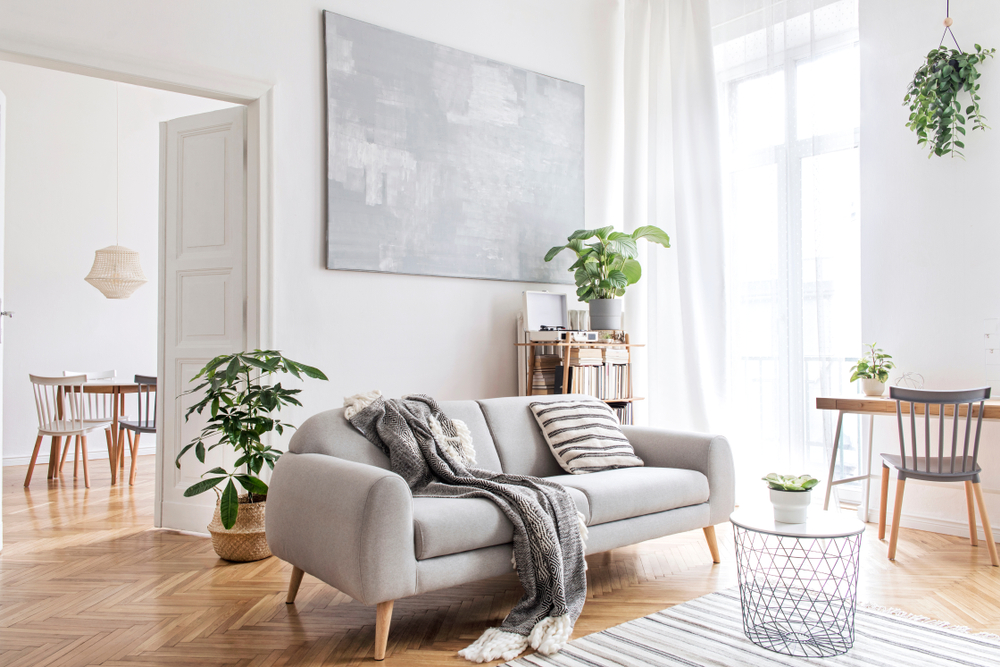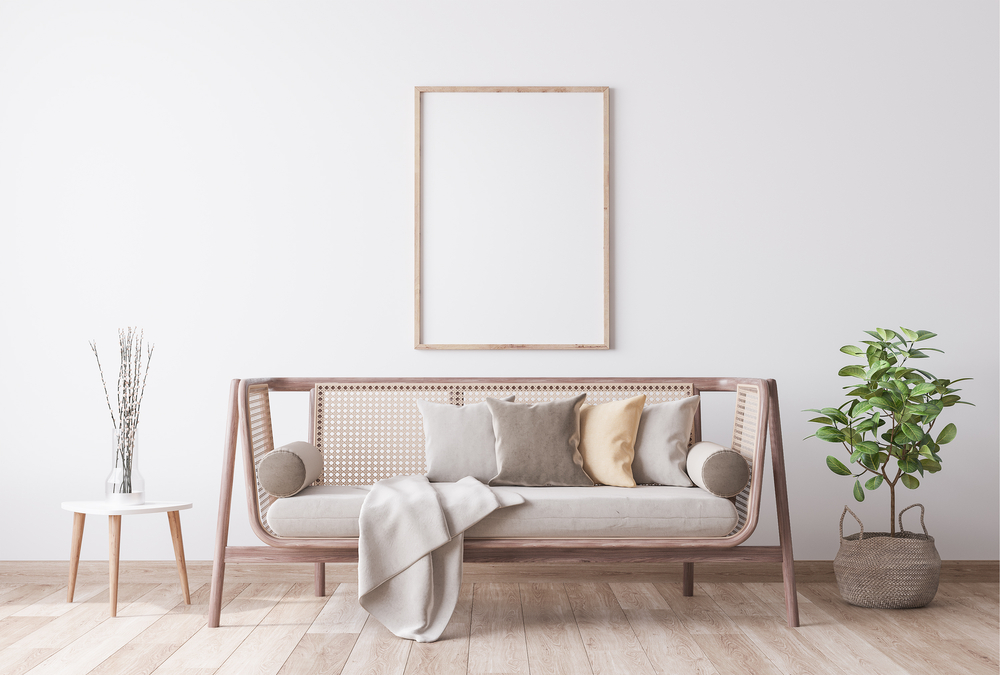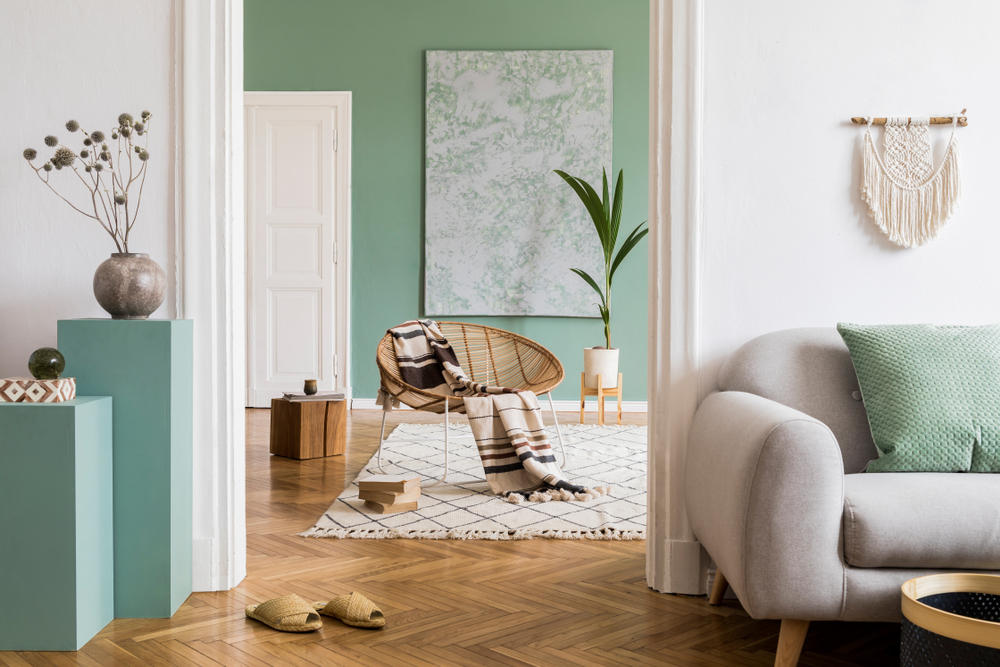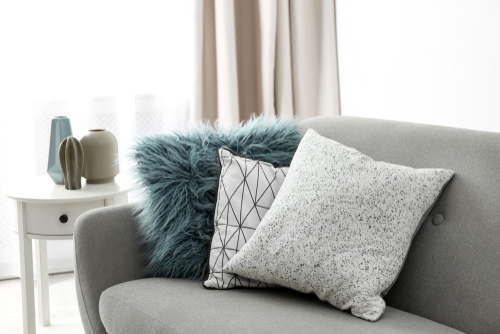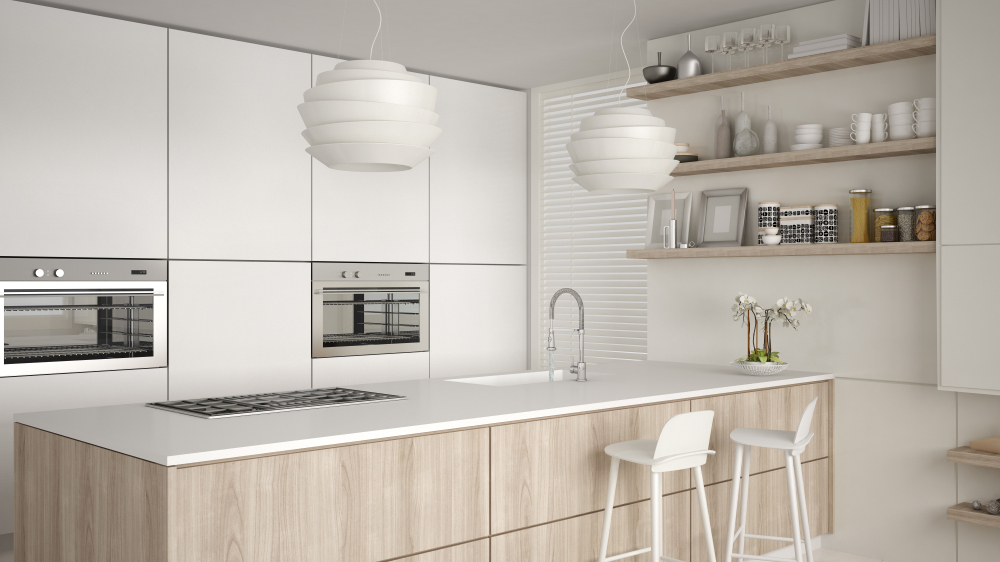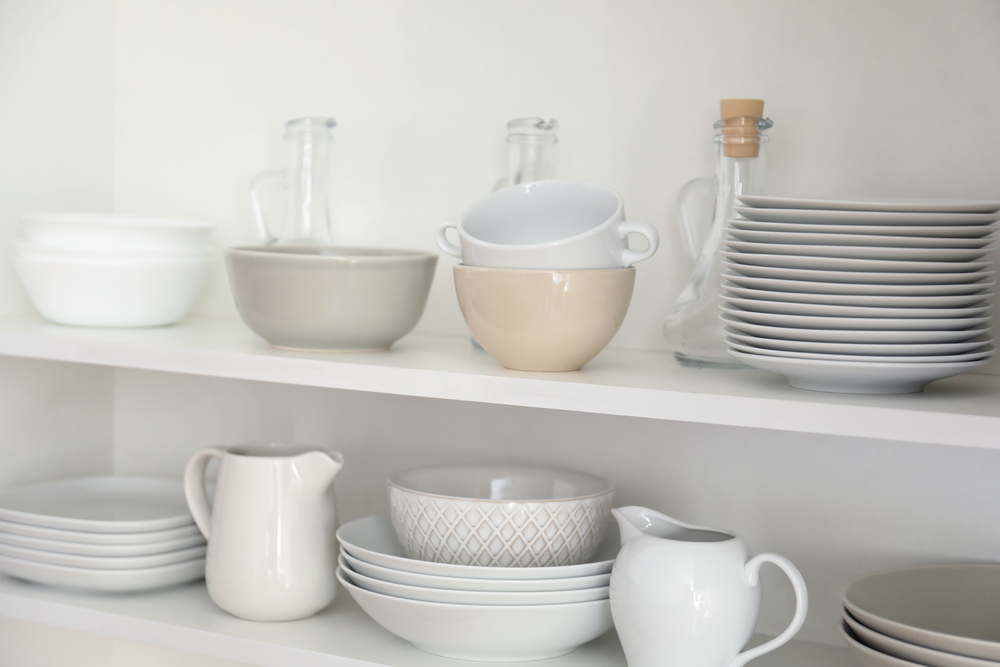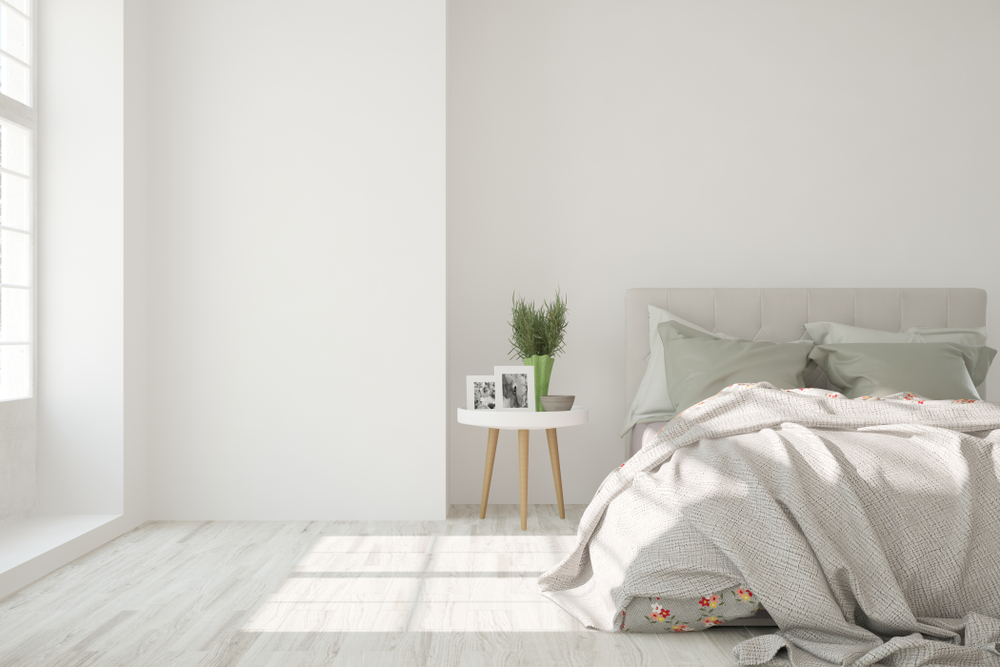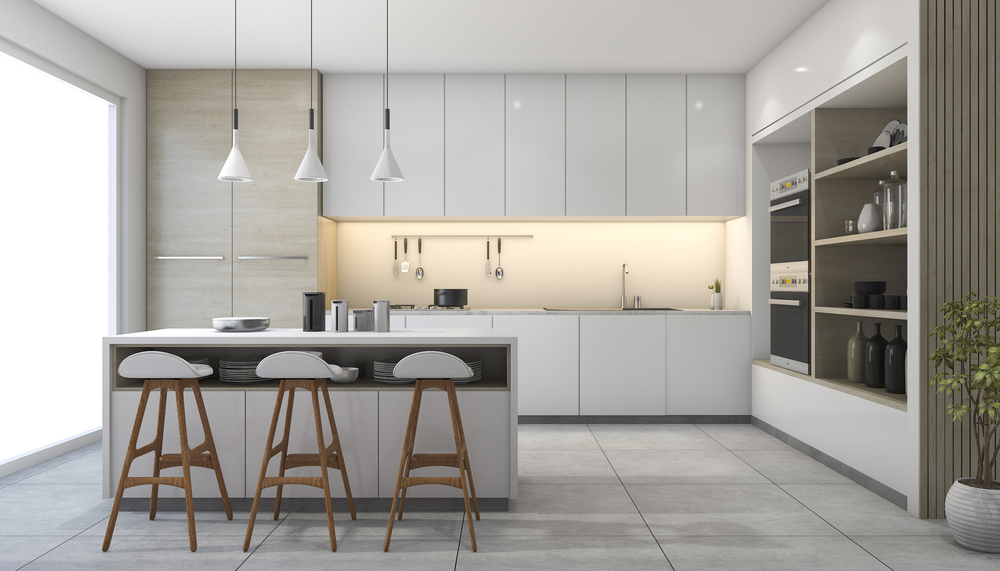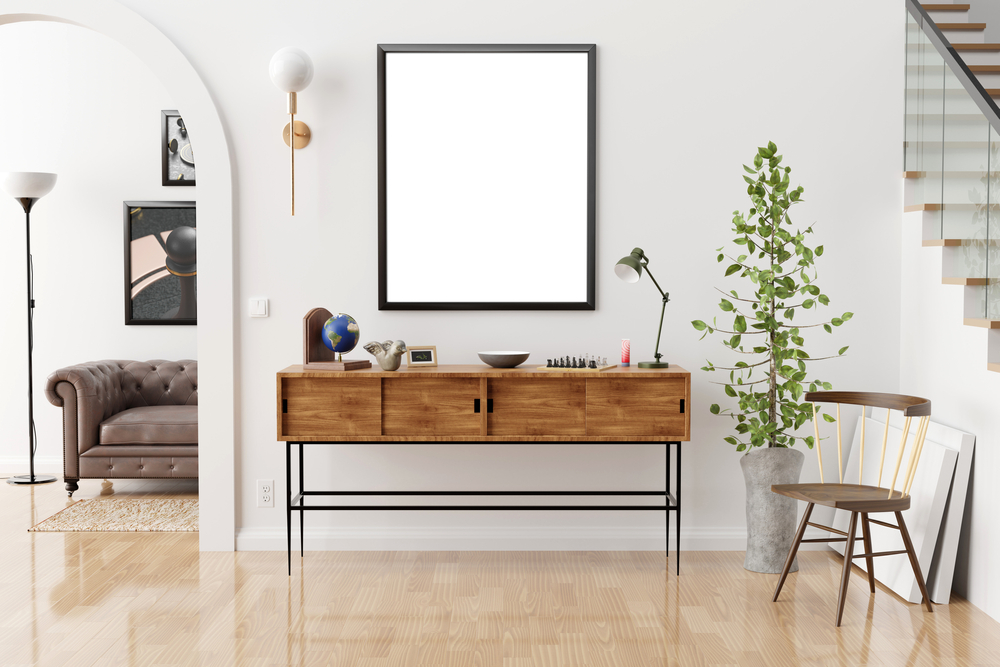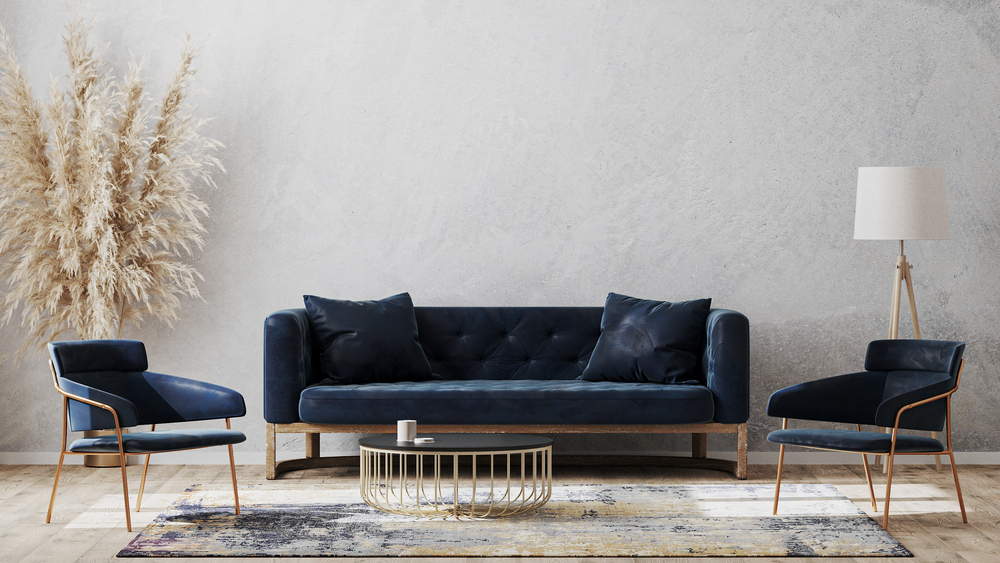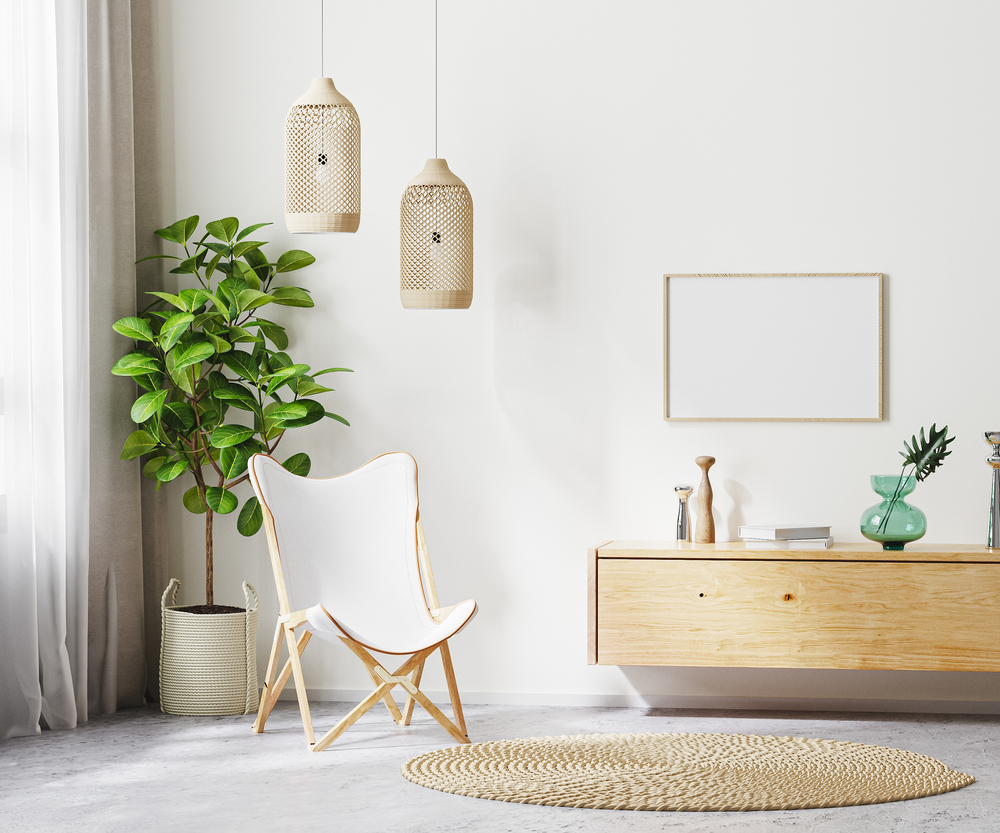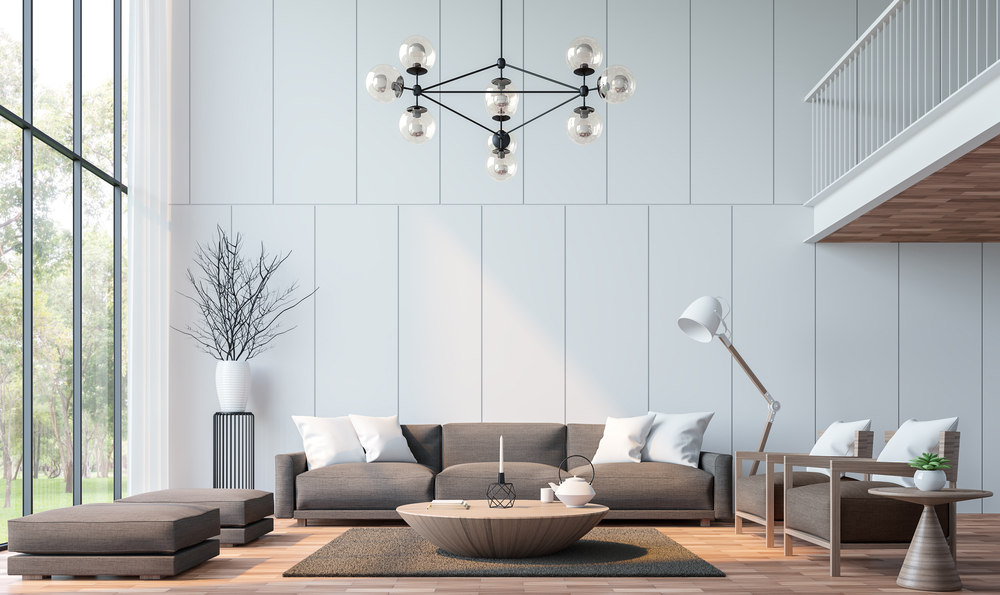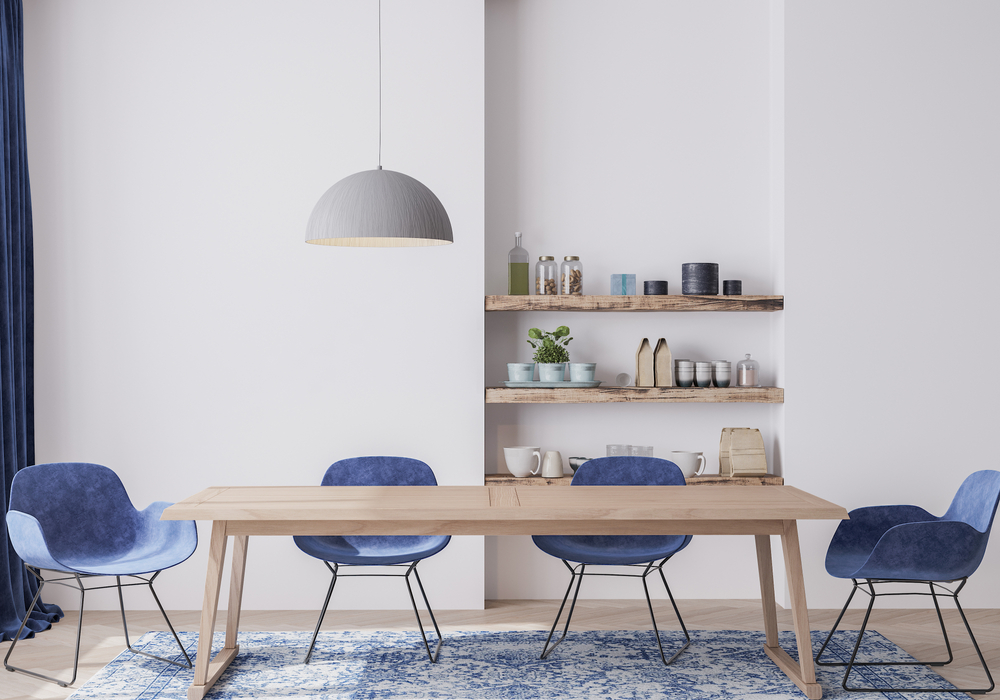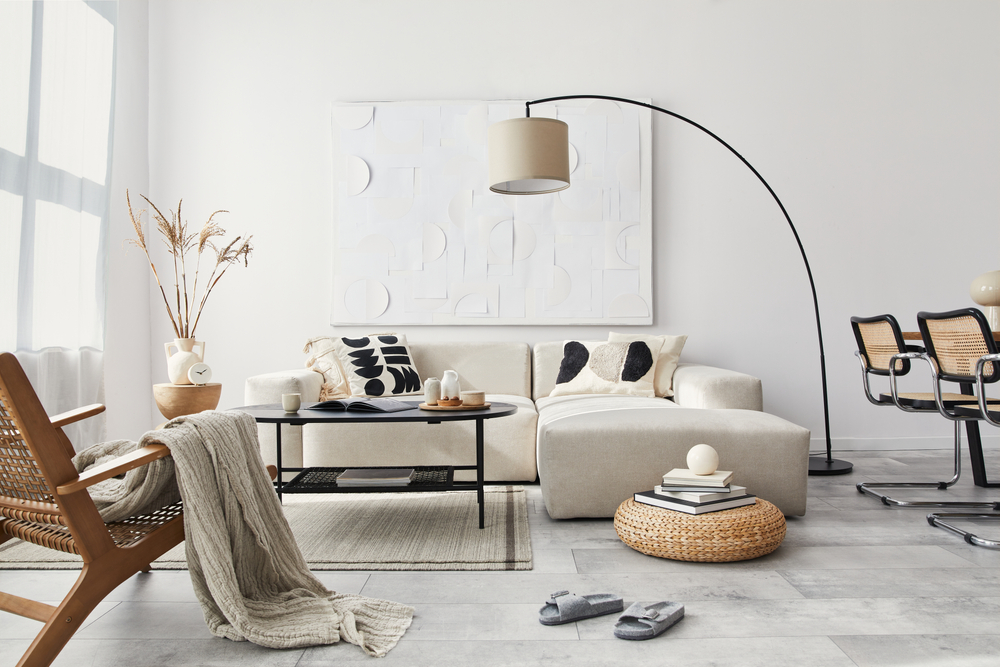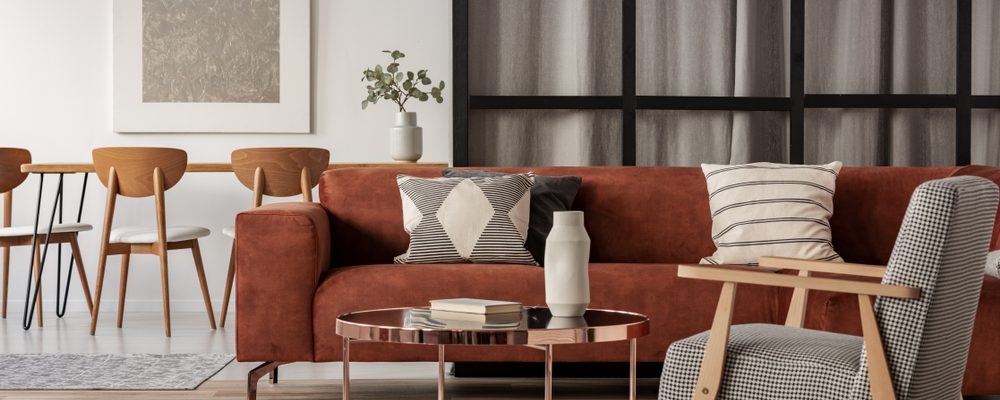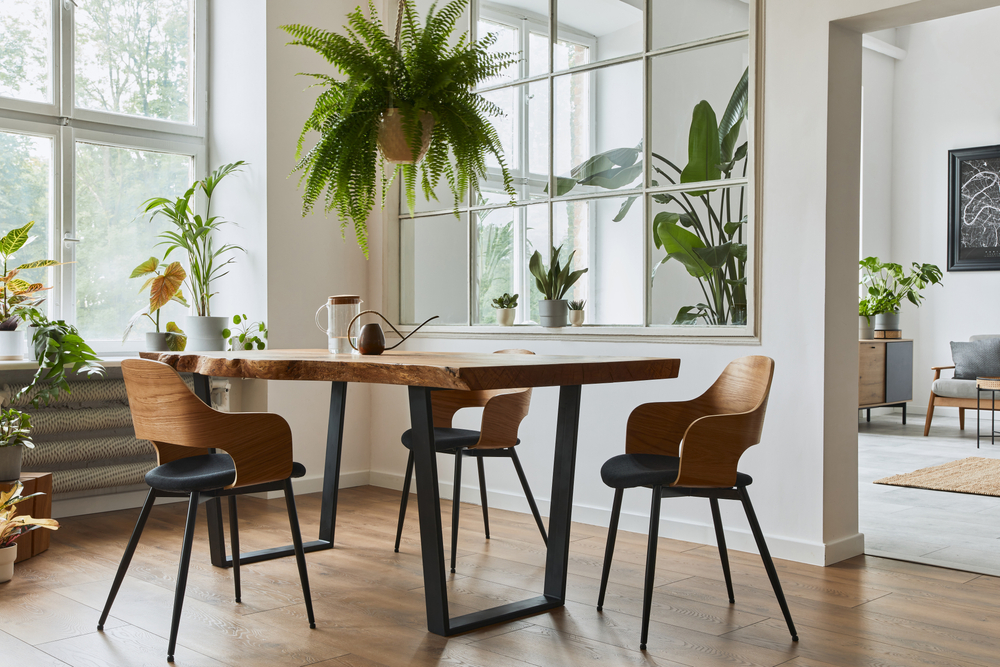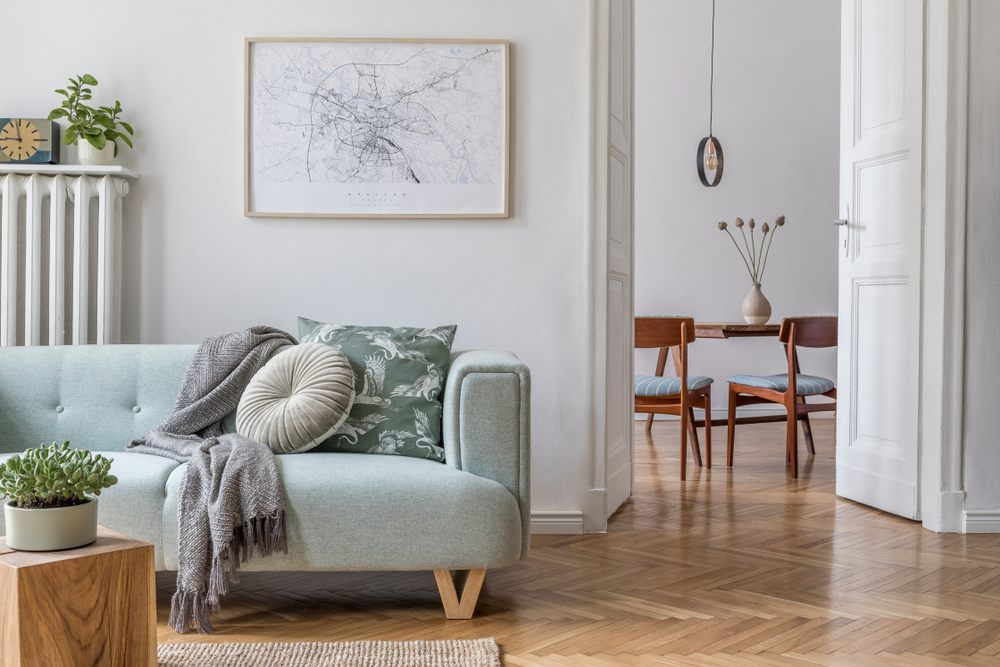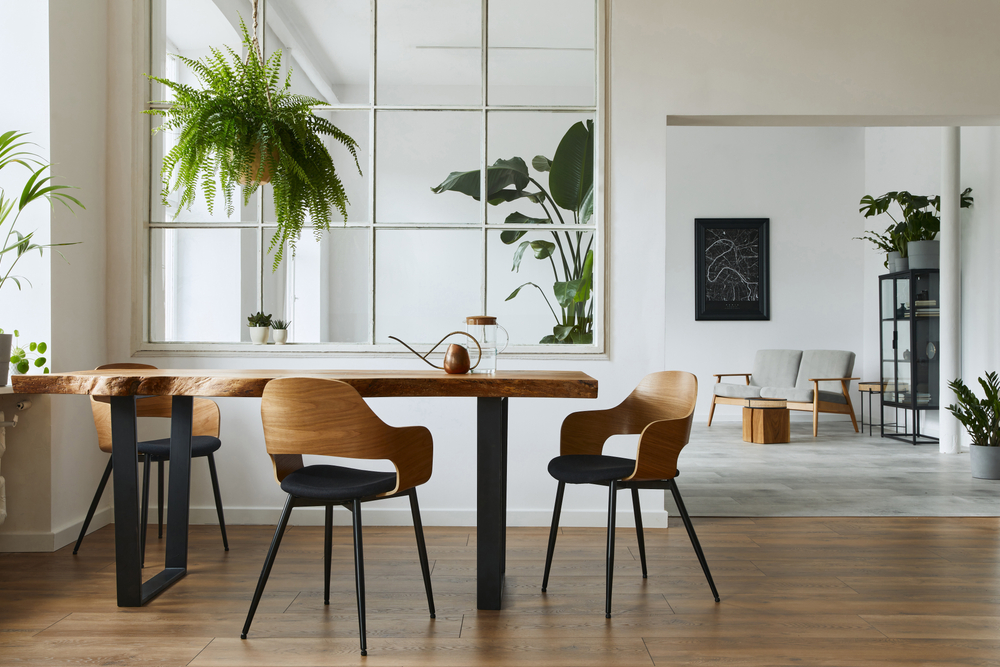20 Beautiful Front Porch Pictures to Inspire Your Seasonal Project
Your front porch is the perfect place for a seasonal refresh when you get the itch to redecorate! With some classic furniture and lighting and a few simple decor swaps, you’ll have a front porch that’ll make you want to celebrate every season.
Spring
The earth feels brand new when the last bits of winter finally melt away. It’s the best time to breathe some life into your porch. Exercise that green thumb, or fake it with some faux plants. Either way, flowers and greenery are the way to go when spring is in the air.
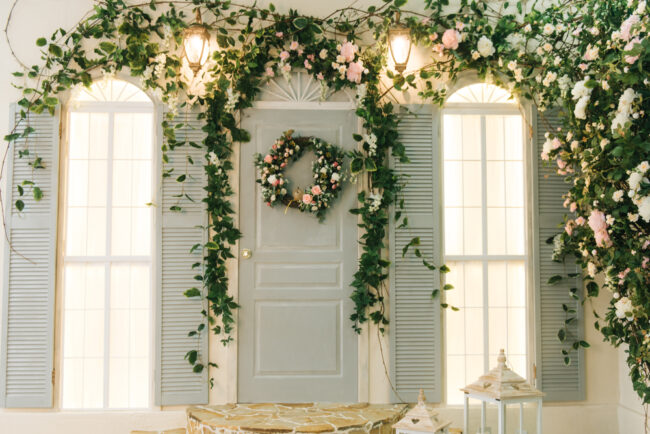
This picture is a florist’s dream. Hanging many garlands may be a bit unrealistic, but adding a few flowery garlands (possibly on a railing) and a matching wreath would give a similar result without all the effort!
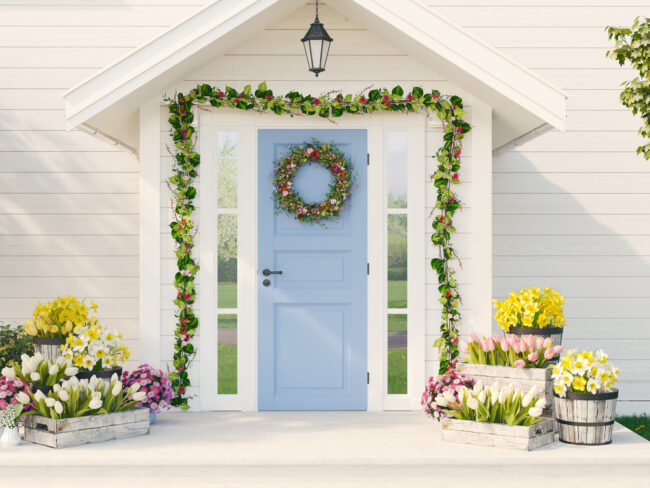
Flower beds are a foolproof way to add some seasonal color. These tulips and daffodils are spring staples. They’re perfectly positioned for height and dimension. Plus, a black pendant light like this is a classic element that’ll work regardless of the season! For proof, check out the same porch in our fall and winter section!
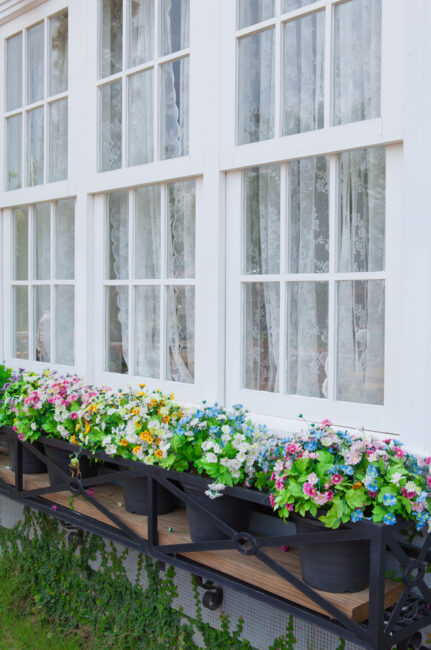
Window boxes are another simple way to liven up your porch. If your green thumb has turned a bit brown, pick some faux plants or flowers instead. Some faux plants look so realistic nobody will know the difference!
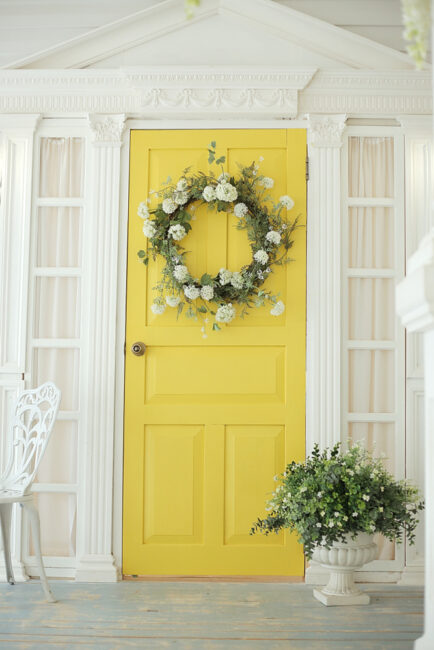
Hello yellow! The neutral green and white wreath make this yellow door POP! If your door is neutral, pick a wreath with bold colors to provide a stunning focal point. When the seasons change, simply swap out the wreath and replace the matching greenery.

A vibrant door and warm-toned wreath combo are the perfect spring-summer tie-in. With this pretty pendant light hanging above the door, this porch won’t go unnoticed no matter when you’re decorating!
Summer
Summer nights spent on the porch evoke the nostalgia of simpler days. Sprucing up your porch to fit the season will make you want to grab your favorite drink, cozy up with a book, and pass the time. No deadlines or stress will get in your way when your porch feels like summer!
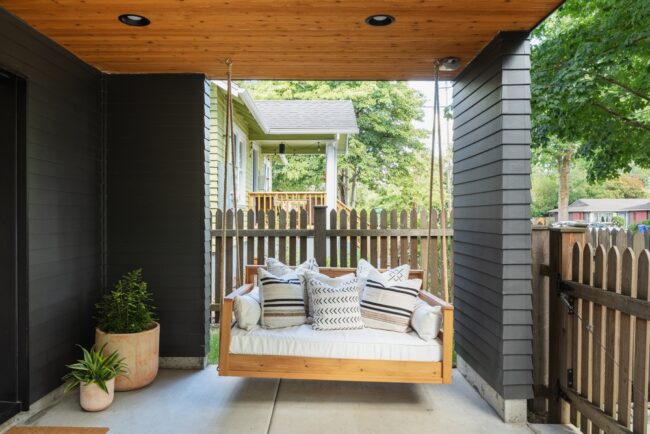
Nothing says comfort like a porch swing, and this one is to die for. The warm wood tones of the ceiling and swing compliment the black paint and greenery beautifully. This homeowner also gets bonus points for the recessed lighting – a great choice! They blend in nicely without detracting from that gorgeous wood ceiling.
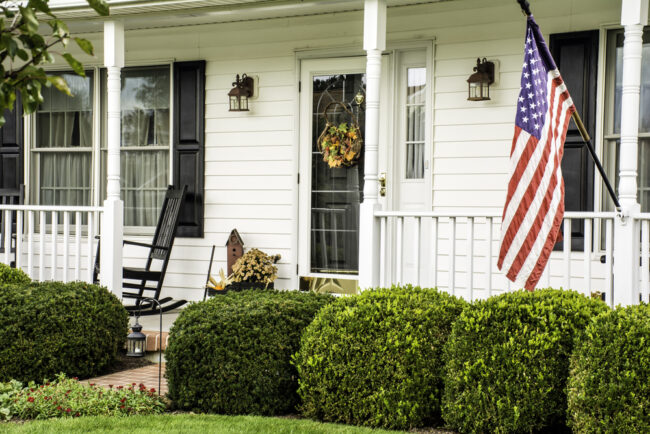
This All-American porch is what summer dreams are made of. The rocking chair is a classic piece of furniture the sconces will fit any season. With a porch lacking a roof overhang, they fit nicely and highlight seasonal decor. Throw in an American Flag for Independence Day and you’ve got a simple summer porch you’ll want to enjoy immediately!
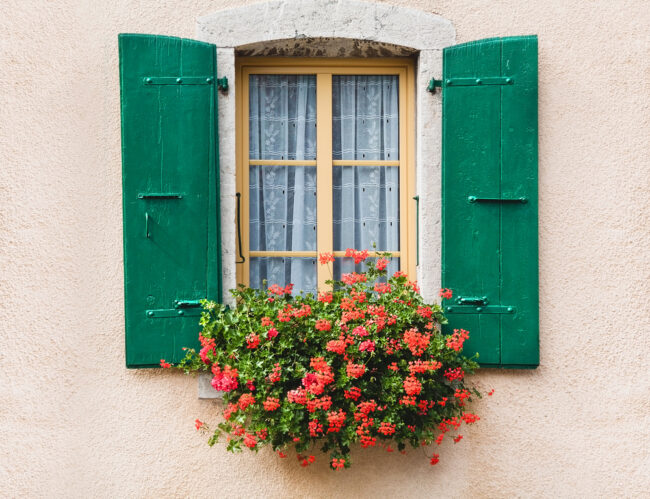
Remember those window boxes full of flowers that died last season? It’s time to say goodbye. Head over to your local plant nursery and find some new flowers that’ll last in your climate. These cute flowers with the amazing green shutters are all the inspiration you need to get to work!
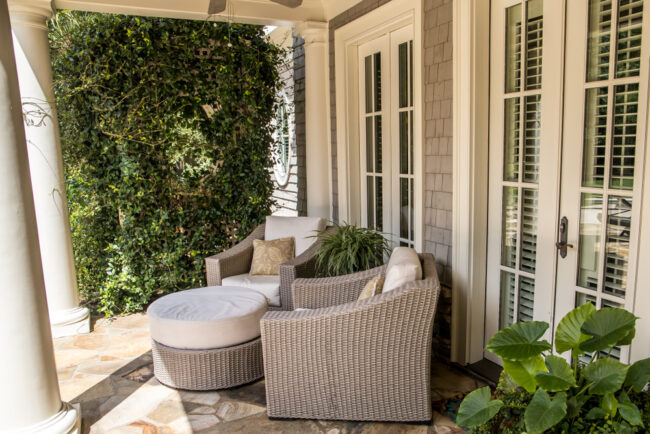
Every cozy porch has one thing in common – comfortable furniture! If you’re still using the stiff, sun-worn furniture you inherited from your Great Aunt Susan 10 years ago, it may be time to consider an upgrade. Pick something you’ll be making excuses to go outside and sit in!
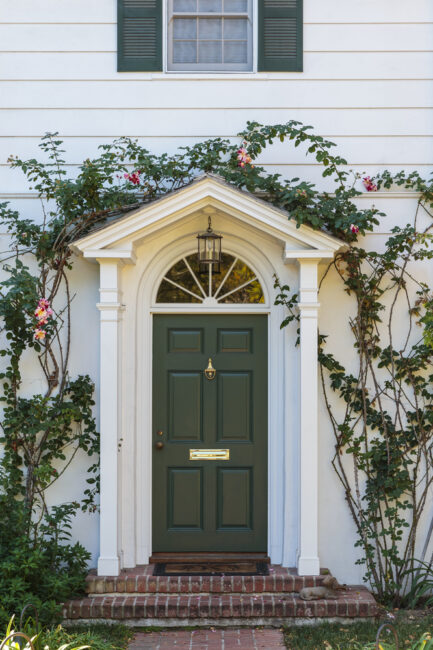
Summer porch decor is all about the plants! These rosebushes over the architectural awning give a minimal touch of color that whispers summer. A dainty pendant is the cherry on top of this charming design. It’ll illuminate this gorgeous porch on summer nights and will transition to every season seamlessly.
Fall
These porches make us want to don our best sweaters, grab some apple cider, and head to the pumpkin patch! The crisp air and flavors of autumn are tough to beat, but these fall-inspired porches make it a close call.
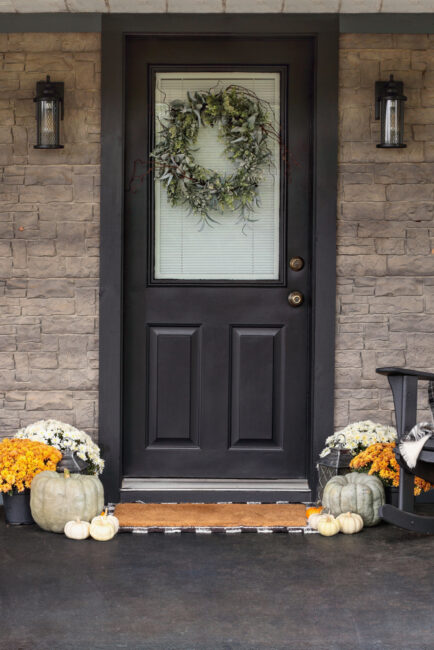
Meet your new best friends this autumn: buffalo plaid, mums, and pumpkins! Throw in some subtle lanterns to tie in the sconces and a neutral wreath that coordinates with the gray pumpkins, and your porch is dressed and ready for sweater weather!

More is more on this porch. Give me all the pumpkins, hay, wheat, and leaves! Adding some lanterns with with candles was a great call here too. Instead of choosing candles that will burn out and need to be replaced, consider solar lighting that’ll charge during the day and light your way at night!

This porch is a mood. The dead hydrangeas that this homeowner somehow worked into their decor are a stroke of genius! The candles in jars add just the right touch of elegance. We’re ready for Halloween.
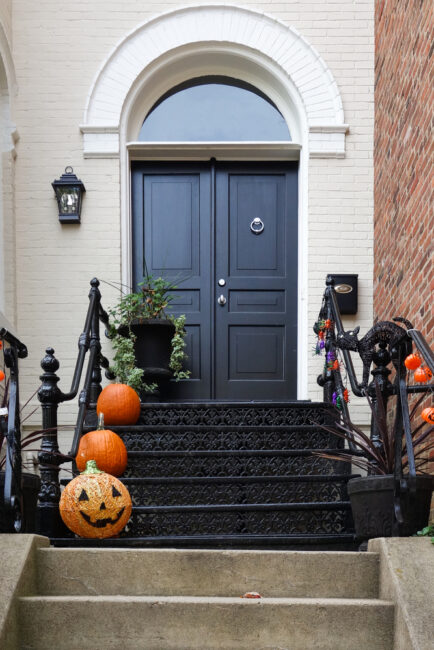
Speaking of Halloween, how can you not love this decor? This porch has just a touch of spooky season, but it can easily be switched out once October ends. Just tuck the jack-o-lantern away and replace the Halloween railing decor with a leafy fall garland, and you’ll have a Thanksgiving-ready porch in no time. The classic black finishes on the stairs, sconce, and door make this house easy to transition between moods and seasons.

The decor on this porch will have you heading to the pumpkin patch to get lost in a hay maze. This porch proves decorating doesn’t have to be complex. Use what you have! A watering can, a few pumpkins, and a hay bale are all great decor ideas for your fall-inspired porch.
Winter
Bring on the red and green, holiday music, and peppermint hot chocolate! The holiday spirit is alive and well on these porches. Nothing brings more joy to this season than a festive front porch.
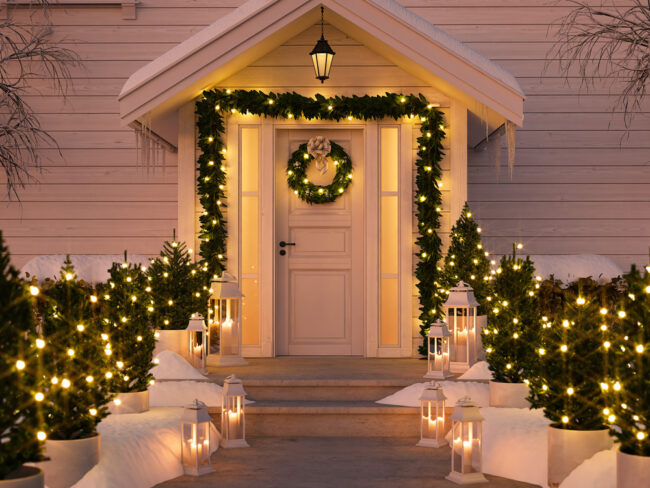
Winter may be our favorite time of year to decorate for, but I guess we’re a bit biased. The twinkle lights hanging everywhere fill the whole neighborhood with magic. This porch is no exception! The potted and lit trees and walkway lights lead you to the door. The hanging pendant welcomes you in. You can’t help but feel the holiday spirit!

Pillars like these deserve to be wrapped in red and green. Garlands are a simple piece of winter decor anyone can find a use for! Adding in the red ribbon and festive wreaths dress this porch up for the holiday season.

This porch’s over-the-top creativity has us swooning. Hanging ornaments from ribbons next to the pendants is brilliant! Lights are incorporated throughout this design – from the coordinating pendants, the sconces, and walkway light to the Christmas lights and string of globe lights, this porch is a holiday masterpiece. Planted poinsettias bring the look together and have us dreaming of winter all year.

Decorating for the holiday season doesn’t have to be time-consuming or break the bank. Red ribbons on some existing potted plants (faux or real), an elegant wreath, and a garland turn this house into a cozy holiday home without having to battle with your attic storage year after year. This porch is just missing some sconces next to the windows with red ribbons to tie together the look!
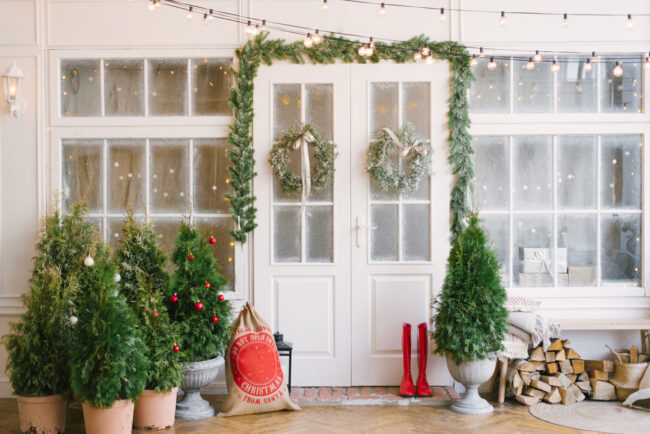
Holiday decor is done right on this styled porch! If you don’t have evergreens in your yard to dress up, a few potted trees like these do the trick. Garlands and wreaths are holiday classics, but we love how even the smallest detail is accounted for. The chopped wood reminds us of a cozy fireplace ready to be lit. Even Santa’s burlap sack is ready for Christmas! As always, lighting is the icing on the cake. With some globe string lights and a white sconce that blends so your decor can be at the forefront, this porch is complete.
—
No matter the time of year, your porch can be a safe haven from the chaos of the everyday. Seasonal decorating can help you feel at home as you move through the year, but don’t forget to invest in decor staples, furniture, and functional pieces that’ll last the whole year. Light fixtures with a black finish, for example, will look good and stand out no matter what season you’re decorating for! For some expert advice on creating a front porch that’ll illuminate your decor, give Watts Current a call!
